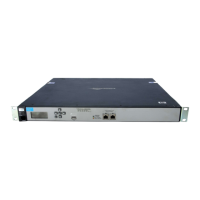Wireless configuration
Wireless coverage
4-3
Select Controlled APs >> Overview > Wireless rates to view information about data
rates for all connected client stations. This makes it easy to determine if low-speed
clients are affecting network performance. To prevent low-speed clients from connecting,
you can use the Allowed wireless rates option when defining a VSC. See Virtual AP on
page 5-10.
Select Controlled APs >> Overview > Wireless clients to view information about
each connected wireless client.
Select Controlled APs > [group] > [AP] >> Status > Wireless to view detailed
wireless information for an AP, including: packets sent and received, transmission errors,
and other low-level events.
Caution APs that operate in the 2.4 GHz band may experience interference from 2.4 GHz cordless
phones and microwave ovens.
Physical characteristics of the location
To maximize coverage of a wireless cell, wireless APs are best installed in an open area with
as few obstructions as possible. Try to choose a location that is central to the area being
served.
Radio waves cannot penetrate metal; they are reflected instead. A wireless AP can transmit
through wood or plaster walls and closed windows; however, the steel reinforcing found in
concrete walls and floors may block transmissions or reduce signal quality by creating
reflections. This can make it difficult or impossible for a single AP to serve users on different
floors in a concrete building. Such installations require a separate wireless AP on each floor.
Configuring overlapping wireless cells
Overlapping wireless cells occur when two or more APs are operating within transmission
range of each other. This may be under your control, (for example, when you use several cells
to cover a large location), or out of your control (for example, when your neighbors set up
their own wireless networks). When APs are operating in the 2.4 GHz band, overlapping
wireless cells can cause performance degradation due to insufficient channel separation.
Performance degradation and channel separation
When two wireless cells operating on the same frequency overlap, throughput can be reduced
in both cells. Reduced throughput occurs because a wireless user that is attempting to
transmit data defers (delays) transmission if another station is transmitting. In a network
with many users and much traffic, these delayed transmissions can severely affect
performance, because wireless users may defer several times before the channel becomes
available. If a wireless user is forced to delay transmission too many times, data can be lost.
Delays and lost transmissions can severely reduce throughput on a network. To view this
information about your network, select Controller > Controlled APs {group} > {AP} >>
Status > Wireless. For recommendations on using this information to diagnose wireless
problems, see the online help for this page.

